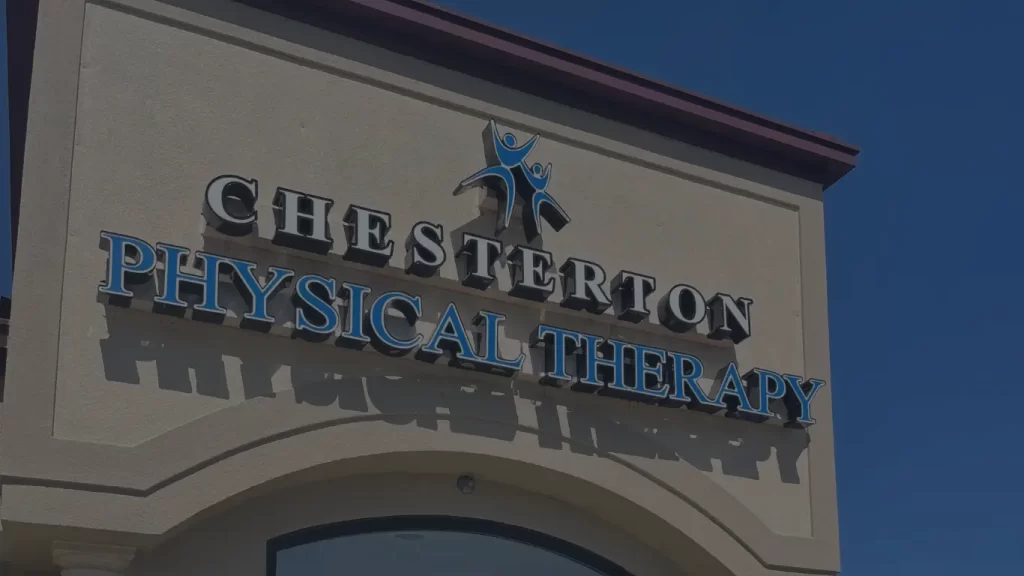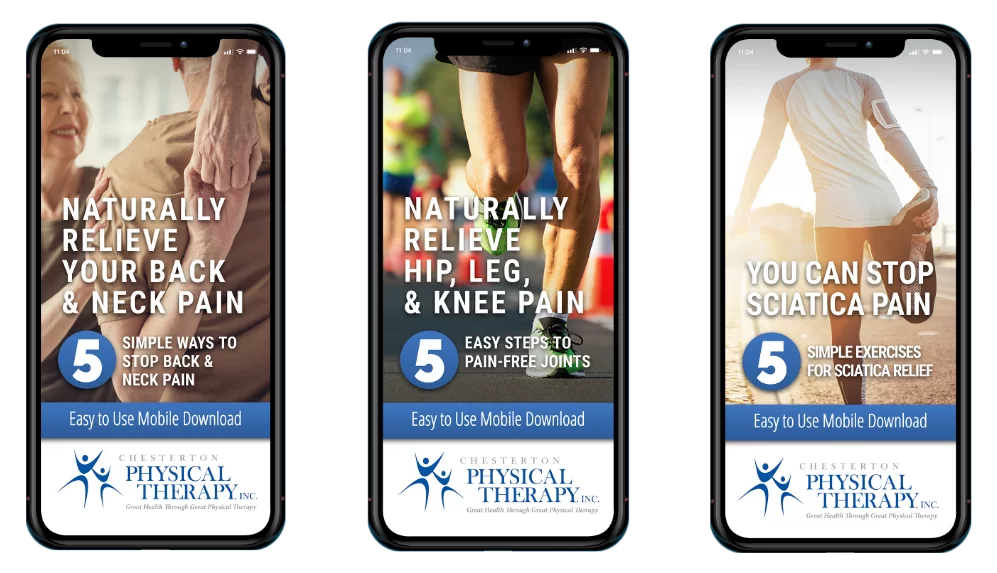Health Blog
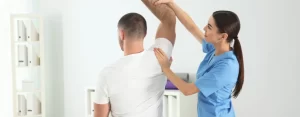
Physical Therapy: Revitalizing Mind, Body & Spirit, Not Just Bones
Physical Therapy Isn’t Only For Recovery After Surgery Ranging from a dull ache to excruciating, back pain can keep you from performing simple daily tasks you once enjoyed. There are few conditions that are more uncomfortable than back pain. While nearly 80 percent of adults experience back pain at some point in their lives, the treatments used to alleviate it are varied. Some people automatically think surgery is the best option to relieve back pain, but that’s not always true. Carrying high levels of risk and requiring months of recovery, back surgery is no small matter. That’s why it should not be a person’s first resort when they are struggling with back pain. Fortunately, if you do need surgery, there are ways to make it go much smoother and to ensure that your recovery process is as fast as possible: PT! PT can offer a variety of benefits when it comes to relieving your back pain, and it can also improve your overall health in the process. Our innovative care strategies at Chesterton Physical Therapy will help you find quick relief. To learn more, call our office today to set up an appointment. Ever heard of “pre-hab?” If you are planning on surgery to help alleviate back pain, you may already have a recovery plan that includes physical therapy. That’s normal, as most extensive surgeries do require physical therapy to begin shortly after the operation is completed. What you may not know is that physical therapy is a great way to prepare for surgery as well. Physical therapy can improve your cardiovascular function and strengthen the muscles and muscle attachments in areas that will already be weakened by surgery. Even a few sessions with a physical therapist have been shown to reduce postoperative care by more than 25 percent. Since most back surgery procedures require long periods of recovery, the idea of cutting it down by a fourth is appealing. A physical therapist will evaluate your current condition and pain level. They will consult with your surgeon for more information and any imaging studies that are available. The physical therapist will then create a treatment plan aimed at immediate pain relief and strengthening the body in preparation for surgery. Physical therapists will help you strengthen your upper extremities as well. If you need better core strength to hold the structures of your spine in place, the physical therapist will work on strengthening your muscles without causing additional damage. Physical therapy after surgery Many people associate physical therapy with a post-surgical treatment plan. While it does play a vital role in helping patients recover once they have been under the knife, it is also an incredible tool for pain relief. A physical therapist can treat acute pain with manual therapies such as heat, ice, electrical stimulation, and massage. However, what most people don’t realize is that pain relief often requires strengthening the structures around the injury, not just treating the injury itself. If you are experiencing back pain, you may need to strengthen your core muscles in your abdomen and legs to help your back find relief. This process is not a fast one, but a physical therapist can show you exercises that are aimed at relieving your pain. Why choose physical therapy? It is important to remember that a physical therapist is an expert in the way the body moves. We have a natural tendency to rest when we are in pain, rather than move. In reality, many people who experience back pain need to learn how to move better. Physical therapists are skilled specialists who can provide you with the necessary education regarding the prevention of future injuries as well. Physical therapy can help you regain lost movement in your back and legs while decreasing your pain levels. A physical therapist can also show you how to prevent further injury in your daily life by teaching you how to bend, lift, stretch, sit, stand, or walk in ways that relieve your back pain. Choosing physical therapy before and after invasive surgical procedures can be one of the best choices you can make for your overall health. You don’t want to end up dependent on prescription medication for pain relief, do you? Of course not! So what are you waiting for? It’s time to start setting yourself up for success. Consult with a physical therapist today You have the power to set yourself up for the best surgical outcome possible. The question now is, why aren’t you seizing it? Whether you are considering surgery or already have a surgical date, call our office to schedule a free physical therapy consultation and start experiencing relief today. Our skilled therapists are movement specialists who will take your case into their hands and create the most effective treatment plan for your recovery. Call us today! Sources: https://www.apta.org/PTinMotion/ https://www.ninds.nih.gov/Disorders/Patient-Caregiver-Education/Fact-Sheets/Low-Back-Pain-Fact-Sheet

Activities to Boost Your Health: Unlock 5 Wellness Secrets
Activities to Boost Your Health: Unlock 5 Wellness Secrets Do you spend your days hobbling painfully from your bed to your reclining chair and back? Does the simple idea of taking part in any kind of vigorous activity make you cringe? Physical activity is most likely the furthest thing from your mind if you suffer from chronic pain. The truth, however, is that getting active can vastly improve your health, your comfort, mobility, and overall quality of life! Our innovative care strategies at Chesterton Physical Therapy will help you find quick relief. Why you should care about your health What does it mean to truly be “healthy?” Essentially, to be healthy means that your body is operating at its highest levels of function in regards to breathing, circulation, digestion, and more. Being healthy doesn’t necessarily mean that you have to be the most athletic person in the room. Any step you make toward helping your body function at its optimum levels is a step toward becoming a healthier you. There are tons of exercises, stretches, and nutritional tips available to you that can help increase your health and help you feel physically better overall. Keep reading to learn about five things you can do to get back on a path towards better health. 1. Swimming Do you enjoy being in the water? If even walking hurts too much these days, maybe you should take a dip in the pool instead. Swimming is tremendously helpful for people with arthritis or extremity injuries because the water eases the forces of gravity on the body. Water has immense healing properties as well. Even if you can’t swim, try some healthy walking or dog-paddling in the water, or simply hold onto the sides while you try out some stretches. You’ll be pleasantly surprised by how good this can be for you! 2. Weight lifting Lifting weights isn’t just for “muscle-heads” or “gym rats.” Weight training can help you build up the muscle tissue that helps to support your joints. If your muscles are strong, it means they’ll tire less easily and will be less vulnerable to painful strains. Working with weights also helps you maintain your bone density and avoid age-related muscle wasting. 3. Bike riding Riding a bike gets you where you want to go while offering a number of health benefits! This kind of aerobic workout can help you improve your heart health, while the simple act of operating the bike exercises your balance and builds leg strength. If you have back pain or knee problems, cycling is also lower-impact than running, and much easier on your shins. 4. Walking Walking requires absolutely no special equipment, and it’s something you literally have to do to get from point A to point B, every day. If you have to make a short trip, why waste gasoline when you can get some fresh air and low-impact exercise instead? Walking gives your circulation a healthy boost without making excessive demands on your body. It also gets your weight-bearing joints moving — and that’s a huge benefit if you struggle with arthritis. 5. Running As previously stated, running is more demanding on the heart, lungs, and knees than walking is. However, these demands can turn out to be very good for something causing you pain. The famous “runner’s high” you may have heard so much about seems to offer its own pain-reducing benefits for chronic pain sufferers. The phrase “no pain, no gain” also seems to apply here. That routine you get from running could encourage your brain to step down its baseline pain sensitivity, making your other aches and pains seem less of a bother. Other ways to maintain a healthy lifestyle It’s no secret that maintaining a healthy lifestyle takes work, but once you get into the groove of it, it becomes much easier and even enjoyable. Starting out by choosing nutritious foods is one of the easiest ways to improve your health (although we know those sweets are hard to kick!) Physical activity is the hardest aspect to get in the habit of doing, especially if you are being held back by chronic pain. Some people try to mask their symptoms with anti-inflammatory or pain-relieving medications, while others, unfortunately, give up on the idea of being active altogether. This only exacerbates pain problems and makes things worse for you in the long run. Luckily, there is an alternative option: physical therapy. With the help of a physical therapist, it is possible to reclaim your pain-free, healthy lifestyle, and get back to doing the activities you love! How physical therapy can improve your health A physical therapist is a licensed movement specialist. They know how to properly evaluate your health and prescribe the right activities for your needs and goals. At the same time, you may be able to enhance the benefits of your activities with other safe, helpful modalities such as massage, ultrasound therapy, dry needling, cold and heat treatments, acupuncture, or laser therapy. It’s up to you if you want to pursue any or all of these activities. You can also ask our physical therapist about integrating them into a full-scale physical therapy program. The latter approach could be a great idea if you’re in the process of rehabilitating an injury, unsure of how much exercise your body can tolerate, or battling a particular chronic pain issue. These therapies can promote tissue repair, ease inflammation, reduce pain, and increase your ability to keep moving and living life to the fullest. Are you ready to improve your health? Face it, we’ve all got one life to live. Life is too wonderful to spend it in bed or in your chair in front of the television. Get up right now and schedule a visit to our physical therapy center. It’s the healthiest move you could possibly make! Sources: https://www.mayoclinic.org/healthy-lifestyle/fitness/in-depth/exercise/art-20048389 http://www.apta.org/PTinMotion/News/2018/11/13/HHSPAGuidelinesRevision/ Swimming Helps Manage Chronic Pain https://www.arthritis.org/living-with-arthritis/exercise/arthritis-friendly/walking.php https://www.webmd.com/pain-management/strength-train https://www.runnersworld.com/health-injuries/a20812312/running-as-pain-relief/ https://www.cyclingweekly.com/news/latest-news/benefits-of-cycling-334144

Aches and Pains Zapping Morning Energy? PT is the Solution!
Aches and Pains Keeping You From Enjoying Your Mornings? Physical Therapy Can Help! Let’s face it, some of us just aren’t morning people. The reason for that varies — sometimes you just want a little extra shut-eye, and other times, it’s because morning presents aches and pains to you that you’d rather avoid. Do you leap out of bed excited at the thought of experiencing another morning – or do you just lie there, afraid to move because of the pain you’re likely to feel? Aches and pains are never welcome, and they can start your day off with low spirits when you’re forced to deal with them from your first waking moments. The good news is you don’t have to keep waking up in pain. Physical therapy can help you to understand why your discomforts are happening and how you can put a stop to them through safe, drug-free methods! Our innovative care strategies at Chesterton Physical Therapy will help you find quick relief. Inflammation and morning pain If you suffer from generalized aches and pains when you wake up in the morning, you’re not alone. Our bodies build up inflammation in the tissues throughout the day. This can be extremely subtle and you may not notice it, even by the end of the day. However, when we lie down and go to sleep, the inflammation can thicken and settle into your muscles. This in turn immobilizes your joints and can lead to aches and pains when you wake up. That same process repeats, day after day, and the pain gets worse. Eventually, chronic pain can set in if you do not make any lifestyle changes to correct the problem. This is why it is a great idea to contact our office for a consultation, before the pain leads to more serious health problems. “Is it my mattress?” Sometimes the answer to morning pain lies in your mattress — literally. According to Spine Health, “Sleeping on the wrong mattress can cause or worsen lower back pain. Lack of support from a mattress reinforces poor sleeping posture, strains muscles, and does not help keep the spine in alignment, all of which contribute to low back pain. Quality of sleep is sacrificed if a mattress does not match one’s individual preferences. A mattress that provides both comfort and back support can help to reduce low back pain and allow the structures in the spine to rejuvenate during the night. While the Better Sleep Council recommends replacing your mattress every 7 to 10 years, the way you feel in the morning is a better indicator that it’s time to replace your sleep surface. If your mattress was once comfortable but now seems to be at the root of your aches and pains, it may be time to replace it. Physical changes like injuries, surgery, and weight change can also change your body’s position as you sleep, necessitating a need to start browsing for a new mattress much sooner! Why does this part of my body hurt in the morning? Each area of the body is vulnerable to pain in its own way. A few common areas people report feeling pain are as follows: Neck pain. Have you ever felt like someone tried to twist your head right off during the night? The problem may be that you may have the wrong kind of pillow for your individual needs! Incorrect head and neck support can leave you with agonizing stiffness. Try a new pillow. Back pain. Back pain is very common and can often be the result of a poor mattress, an injury, bad posture during the day, or several other conditions. Pain can afflict any part of your back first thing in the morning. If you can barely move in the morning or never get quite comfortable at night, it’s time to take a look at your mattress and daily movement habits. Jaw pain. Does your jaw feel stiff and achy when you wake up in the morning? You may be grinding your teeth or clenching your jaw as you sleep, a problem known as bruxism. This habit is associated with emotional and physical stress. Hip pain. If the pain you experience in the morning feels like it’s on the outside of the hip and bothers you more at night, bursitis may be the culprit. If you experience hip pain that feels like it’s coming from within the joint and is at its worst upon awakening, suspect osteoarthritis. Heel pain. Do you dread getting out of bed in the morning because of the pain you know you’ll feel once your feet hit the floor? If taking those first steps in the morning is torture for your heels, but the pain then recedes as you walk around, you probably have a chronic inflammation of the arches called plantar fasciitis. How can physical therapy help me? Some people feel achy when they wake up, some feel achy when they go to sleep. Morning pain and overnight pain are closely related. Issues such as chronic lower back pain may nudge you into wakefulness many times each night, creating a twinge of pain with the tiniest body movement. By the time you have to get up in the morning, you might feel even more pain than you did when you went to bed, which can often make you want to crawl right back under the covers and go back to sleep. Thankfully, there’s a solution to your pain: physical therapy. An experienced physical therapist will know how to evaluate your symptoms in detail, see how they correspond to your sleep quality (or lack thereof), and identify the underlying causes. From there, your therapist can begin the creation of a physical therapy program aimed at eliminating or controlling the causes of your pain. For instance, they might determine that your back needs a firmer or softer mattress, or that your neck could benefit from a contoured cervical pillow. Other physical therapy treatment modalities can help you strengthen your back, tame bursitis, relieve plantar fasciitis, or control osteoarthritis symptoms. Are
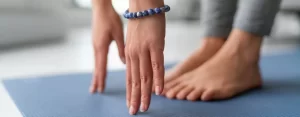
Discover 5 Powerful Reasons to Make Stretching a Habit!
Are You Stretching Frequently? If Not, Here’s 5 Reasons Why You Should! Improve Your Health and Wellness by Stretching! Have you ever noticed how good stretching feels after a nap, when you first wake up in the morning, or after vigorous physical activity? That good feeling just scratches the surface with the many healthy benefits you can get from regular stretching. Our innovative care strategies at Chesterton Physical Therapy will help you find quick relief. That’s why our physical therapist commonly recommends specific types of stretching exercises to complement other physical therapy modalities. Why stretching is a big part of PT Since stretching exercises offer so many important benefits, it’s not hard to see why we use them all the time in physical therapy. Physical therapy can combine targeted stretches with strength building exercises, massage therapy, ultrasound therapy, heat or cold therapy, and many other techniques to help you feel better and stay healthy. We can also make sure you are doing the right stretches for your needs and show you how to perform them safely. Below are five ways you can improve your health, comfort and function by simply stretching! 1. Stress relief Emotional stress can often turn into physical stress in the form of muscle tension, sleep problems, and suppressed immune function. In other words, it can make you sick! Stretching exercises can help to release the accumulated tension in your body while also calming your mind. Stretches that include mindfulness work (such as yoga) can prove especially helpful for easing the stress that might otherwise impair your health. 2. Chronic pain relief Speaking of pain relief, you may be surprised and delighted to discover how just well stretching can work as a chronic pain management tool. For instance, certain stretching exercises can undo the painful muscle knots associated with tension headaches or chronic pain syndromes such as fibromyalgia. Stretching is also recommended to help control arthritis pain and stiffness. Our physical therapist can determine which kinds of stretches will best suit your needs. 3. Increased blood flow Stretching doesn’t just relax your muscles; it also helps them receive the nourishment they need. That’s because when your muscles are tight and stiff, blood doesn’t flow through them as easily – and blood contains the oxygen and other nutrients necessary for optimal tissue health and performance. Stretching to ease that muscle tension gives your circulation a welcome boost. The same effect also helps your tissues rid themselves of unwanted, pain-causing substances such as lactic acid. 4. Injury prevention Athletic events, physical training, or demanding labor can leave you with a painful strain or sprain, especially if those tissues were “cold” when they were subjected to their burdens. Gentle, careful stretching before a challenging activity can reduce your risk of acute injury. Stretching immediately after your activity will also remove any muscle tension that may have accumulated during your strenuous activity. 5. Increased flexibility Are you frustrated because you don’t seem to have the same range of motion that you once did? A variety of musculoskeletal challenges can reduce your flexibility, creating stiffness and making certain motions uncomfortable or even impossible. Stretching can gently coax the stiffness out of tight tissues. Depending on the cause and location of your stiffness, our physical therapist may prescribe exercises such as hamstring thigh hip, chest, shoulder, upper back, or bicep/tricep stretches to loosen you up and improve your mobility. So, what else should I know about stretching? It is also quite common for a physical therapist to prescribe various stretching exercises for individuals suffering from chronic pain conditions. Stretching is of particular importance when you become less mobile due to issues such as osteoarthritis. The less you move your joints, the more likely your muscles and connective tissues will be to lose some of their length. This change clearly limits your joint motion even further and leaves you in even more pain. Stretching naturally supports PT recommendations such as walking, heat therapy, or massage therapy, in order to increase blood flow to painful joints and widen your pain-free range of motion. Chronic pain syndromes often involve muscle tightness. Syndromes such as fibromyalgia and myofascial pain syndrome can cause muscle knots that limit muscle movement, resulting in pain to other parts of the body. Regular stretching can help you untie those painful knots. Get started today! Are you ready to stretch your way to a happier, healthier lifestyle? Please contact our PT center today to learn more and schedule an appointment. We don’t stretch the truth when we say we can help! Sources: https://www.thehealthy.com/mental-health/stress/stretching-exercises-for-stress-relief/ https://www.arthritis.org/living-with-arthritis/exercise/how-to/stretching-benefits.php https://www.webmd.com/fibromyalgia/ss/slideshow-fibromyalgia-friendly-exercises https://www.verywellfit.com/does-stretching-matter-3119195 https://www.painscience.com/articles/stiffness-and-rom.php http://guidetoptpractice.apta.org/content/1/SEC40.extract https://www.coachup.com/nation/articles/the-10-best-stretches-for-total-body-flexibility https://www.healthline.com/health/benefits-of-stretching#benefits 5 Ways Stretching Can Improve Your Overall Health
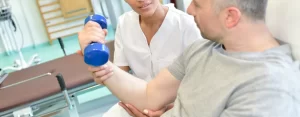
Chronic Pain Zapping Your Energy? PT Recharges You
Chronic Pain Zap Fighting Chronic Pain with Physical Therapy Treat Your Chronic Pain Safely! Any pain that lasts longer than three months is classified as “chronic.” When people have chronic pain for a long time, it can become a downward spiral. As a result of the pain, they become more inactive and sedentary, and more often than not, their health worsens. People with chronic pain may even turn to extreme options, such as surgery or addictive painkillers, to try to find relief from pain. If you have chronic pain but want a non-invasive, non-addictive relief option, it’s time to get in touch with our office and talk to a physical therapist. Our innovative care strategies at Chesterton Physical Therapy will help you find quick relief. How can physical therapy help me find relief? The course of therapy recommended by your physical therapist will be tailored to meet your specific needs and objectives. After an initial consultation and examination, your therapist will do their best to work with you on methods to begin to overcome your chronic aches and pains. This is going to start with education. Your therapist will explain how your pain developed and what can be done to relieve it. The goal will initially be to manage pain, so that you can eventually get back to enjoying your normal routine. Exercise, stretching, and flexibility are all part of physical therapy. Becoming stronger and more flexible over time will make it easier for you to move around with less pain. This is going to be a slow and gradual process – exercises will focus on the slow, steady and gradual improvement of your strength and flexibility. Manual therapy is a specialized type of massage that physical therapists are trained to perform. These techniques will be used to mobilize tight joints that contribute to pain, and to manipulate soft tissues for relief. This technique may be very therapeutic when dealing with pain. Finally, posture and body mechanics training will be a major part of your physical therapy. Learning how to use correct posture at home, at work, and at rest can help to relieve pain and prevent recurrence of pain. All these treatment modalities will help you return to normal life without invasive surgery or painkillers. What should I know about chronic pain? As stated by the National Institute of Neurological Disorders and Stroke, “While acute pain is a normal sensation triggered in the nervous system to alert you to possible injury and the need to take care of yourself, chronic pain is different. Chronic pain persists. Pain signals keep firing in the nervous system for weeks, months, even years. There may have been an initial mishap — sprained back, serious infection, or there may be an ongoing cause of pain — arthritis, cancer, ear infection, but some people suffer with pain in the absence of any past injury or evidence of body damage. Many chronic pain conditions affect older adults. Common chronic pain complaints include headache, low back pain, cancer pain, arthritis pain, neurogenic pain (pain resulting from damage to the peripheral nerves or to the central nervous system itself), psychogenic pain (pain not due to past disease or injury or any visible sign of damage inside or outside the nervous system). A person may have two or more coexisting chronic pain conditions. Such conditions can include chronic fatigue syndrome, endometriosis, fibromyalgia, inflammatory bowel disease, interstitial cystitis, temporomandibular joint dysfunction, and vulvodynia. It is not known whether these disorders share a common cause.” Chronic pain affects each person differently. In many cases, the pain continues long after the body is healed of injury or a surgical procedure. The good news is that physical therapy is not a one-size-fits-all approach to pain relief. Your physical therapist has many tools and techniques at their disposal to help relieve and overcome chronic pain. Chronic pain has a number of symptoms associated with it, apart from the fact that the pain lasted more than three months. Here are some of the symptoms associated with chronic aches and pains: Weight Gain and Additional Problems: People with chronic pain may put on too much weight, which can lead to a host of added problems, from diabetes to heart disease. Reduced Circulation: Remaining inactive due to chronic pain reduces your circulation, which means your cells are not receiving a healthy amount of blood and oxygen. This can cause tissues to degenerate and leads to feelings of constant fatigue. Reduced Fitness: Inactivity due to chronic pain can cause your muscles to weaken and shrink. This can have profound physical effects over time, such as impacting your sense of balance. Stiffness: Muscles and joints may feel stiffer when suffering from chronic pain. Activity Avoidance: People with chronic pain become fearful of normal activities. The fear of additional pain can cause people to withdraw from normal physical activities that they enjoy. Ready to get started? If you have suffered from chronic aches and pains, take the first step today to overcome your condition. Call our office to schedule a physical therapy appointment.
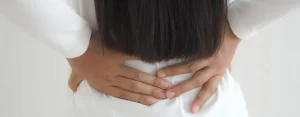
Do You Know What’s Causing Your Back Pain?
Do You Know What’s Causing Your Back Pain? Discover How Physical Therapy Can Help You Relieve Herniated Disc Pain Back pain is one of the most common complaints among Americans. Whether you experience occasional pain in your back or deal with recurrent chronic back pain, it can make it extremely difficult to complete your daily tasks. But have you ever wondered if your back pain was a sign of a more serious condition? The spine is made up of a complex series of bones called vertebrae. There are cushioning pads between each of the vertebrae that act as shock absorbers, making bending, walking, and moving around in general every day possible without pain. But if these little cushioning discs are injured, the soft center can actually rupture and cause severe pain. This type of injury is often referred to as a herniated or slipped disc, and while there is no cure for the condition, physical therapy can help manage chronic pain. Our innovative care strategies at Chesterton Physical Therapy will help you find quick relief. What does PT for herniated discs look like? When experiencing back pain, it can be tempting to simply visit your general physician in search of a quick solution. However, in many cases, all that a general physician can offer in the way of pain relief is a prescription for painkillers. Alternatively, an experienced physical therapist can offer a variety of treatment options that are designed to target the root cause of your reoccurring back pain. Some of the most common treatment options recommended by our physical therapist for herniated disc pain include: Ultrasound therapy or electrical muscle stimulation for fast pain relief and deep penetration of the targeted area Alternating treatment with ice and heat to reduce inflammation and soothe sore muscles. Therapeutic massage to help ease sore muscles Aerobic exercises like walking or using a stationary bicycle Stretching exercises that help to keep the muscles in the back flexible Why did I develop a herniated disc? The spinal column is formed by a group of bones. The cervical spine consists of seven bones, the lumbar spine has five, and the thoracic spine has twelve. Each disc has a gelatinous inner section and a strong outer ring. If the disc protrudes through the outer ring, it is known as a herniated disc. This can lead to numbness, discomfort and pain. The vertebrae and cushioning discs in the spinal column can become injured in a variety of different ways. However, when dealing with a herniated disc, injuries are most often the result of: Improper lifting resulting in sudden strain Work-related or overuse injuries where the spine has been twisted violently Excessive weight gain and obesity The natural aging process or degeneration The herniated disc can be caused by a variety of causes, including movements such as turning or twisting. Another offender is moving heavy objects. Weight can also cause herniated discs, as it causes the need for discs to bear more weight. According to Healthline, men are also at a higher risk of developing a herniated disc than women. How can I tell if I have a herniated disc? Herniated discs are one of the most common back pain complaints. They typically occur in people aged 35 to 55 years but can affect physical therapy patients of all ages. Herniated disc pain presents itself in a variety of ways depending on a person’s age, body type, and physical condition. In certain cases, a herniated disc may show no outward symptoms at all. Our trained physical therapists are dedicated to help you achieve a pain-free life. But for those dealing with recurring pain from a herniated disc, the following symptoms are also common: Neck spasms affecting the muscles in the neck and shoulder area. Neck pain that stays centered in the back and side areas of the neck. This type of pain can increase in severity when bending or turning the neck. Pain radiating out from the shoulder, arm, and sometimes traveling down to the hands and fingers. Pain in the shoulder blade area. Schedule your appointment today! If you have had recurrent back pain or pain near your neck or shoulder, it may be a sign of a herniated disc. By using targeted treatments and physical therapy exercises, our physical therapist can help you manage your herniated disc pain and prevent the use of prescription drugs or more invasive treatment options for pain. Please contact us today for more information and to schedule an initial consultation!


